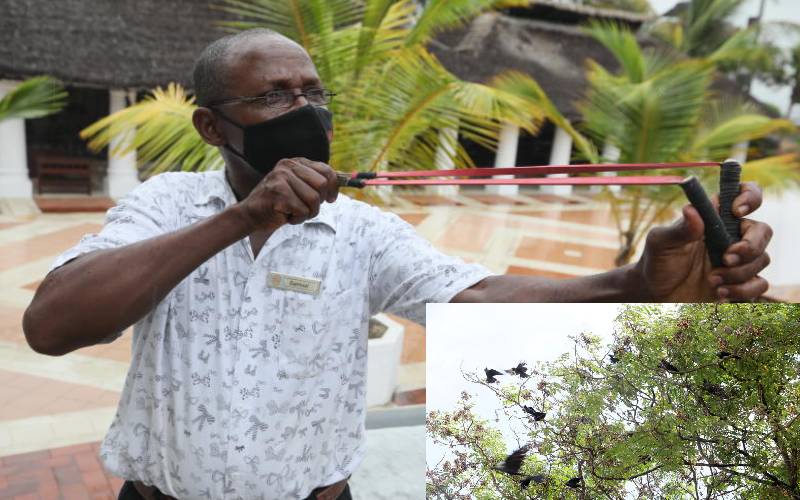×
The Standard e-Paper
Informed Minds Prefer The Standard

Samuel Ndunda aims at Indian house crows at Serena Beach Hotel, Mombasa. INSET: Indian house crows search for food. [Omondi Onyango, Standard]
At Serena Beach Hotel and Spa in north Coast, we find Samuel Ndunda, 52, armed with a catapult to scare away birds.